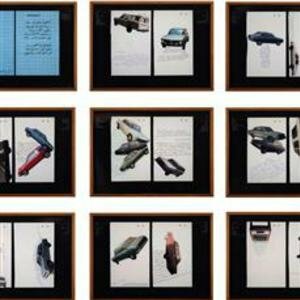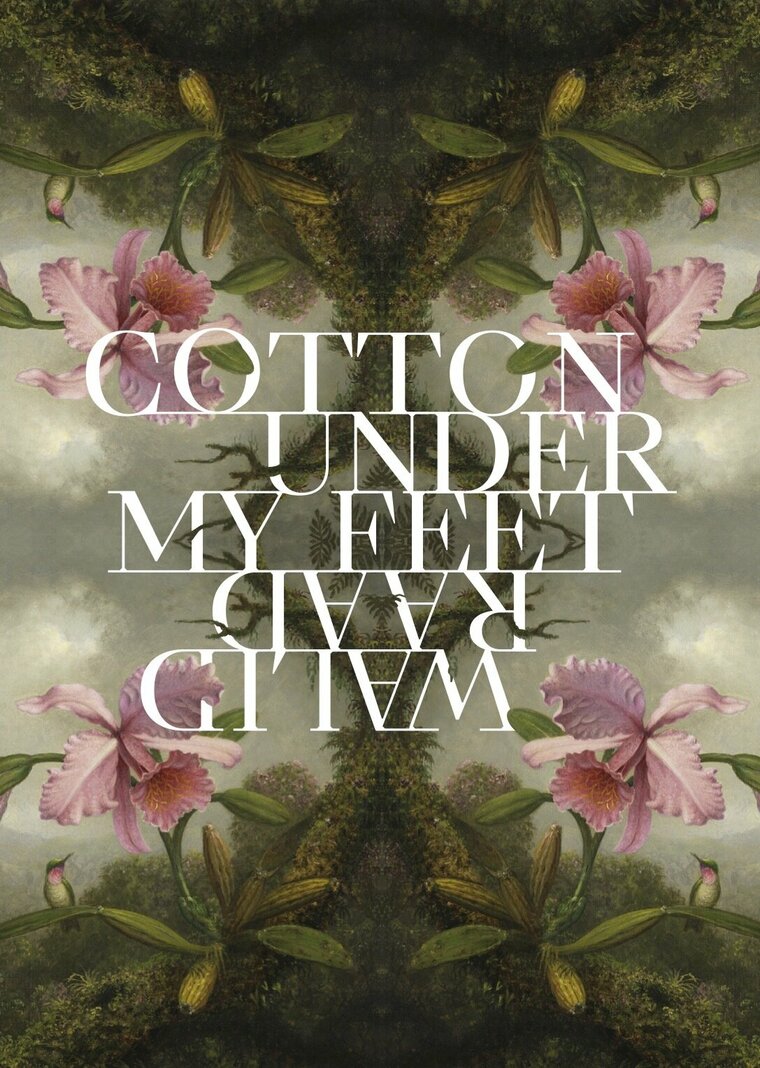


Last updated on Mon 29 November, 2021


WALID RAAD: COTTON UNDER MY FEET
October 6, 2021–January 23, 2022
Museo Nacional Thyssen-Bornemisza, Madrid
A newly commissioned exhibition and walkthrough-performance by artist Walid Raad
Organized by Thyssen-Bornemisza Art Contemporary (TBA21) at the Museo Nacional Thyssen-Bornemisza (Madrid)
How does a private art collection become public? Who was Hans Heinrich Thyssen-Bornemisza? These seemingly easy (and not so easy) questions are at the heart of Walid Raad’s new project “Cotton Under My Feet,” conceived for the Museo Nacional Thyssen-Bornemisza. Over the past twenty-five years, Raad has gravitated time and again to highly charged matters, engaging how violent events are lived, experienced, and expressed; how certain facts become manifest in history while others in fiction. In keeping with his experiments, visitors should brace themselves for a plunge into a rabbit hole of storytelling.
“Cotton Under My Feet” is Raad’s second large commission by TBA21, following “Scratching on Things I Could Disavow,” which premiered in Vienna in 2011. For the past three years, the foundation and the Museo Nacional Thyssen-Bornemisza have collaborated on the research and realization of this new work. Taking place across different galleries in the museum and timed to coincide with the centennial celebrations of the museum’s original founder, Hans Heinrich Thyssen-Bornemisza, the exhibition opens the doors to a hermeneutical labyrinth. In the vertiginous quest for an untold (art) history, “Cotton Under My Feet” explores the genesis of the Thyssen-Bornemisza Museum, its collections, archives, and storage space, as well as the multigenerational histories of the family’s art holdings. In doing so, Raad also chronicles the histories of slavery, American sugar politics, Cold War art diplomacy, silver speculation, and weather forecasting, while uncovering other unexpected traces hidden under an extremely rare Oriental carpet.
The inauguration of the Museo Nacional Thyssen-Bornemisza in 1992 was the culmination of a series of events that took place during a momentous period for Spain. It was also a celebration, since the museum’s inception marked one of the most important private-to-public art transfers of the twentieth century. Revisiting that auspicious moment, Raad investigates the events leading to the founding of the museum and hypothesizes about the motivations and conditions relating to the sale, transfer, care, display, and storage of the artworks acquired by the Spanish state.
Through this lens, the exhibition unearths the founder’s legacy via an examination of various odd artifacts that Raad found or imagines in Thyssen-Bornemisza’s collection. These range from images of clouds that mysteriously appeared on the back of several old master paintings to gold and silver cups that attract specific types of arthropods, angels that self-restore, and demon-like creatures tugging at the edges of swamps. Raad also locates a set of modified collection catalogues and other annotated publications, in which historians, conservators, curators, and others are offered a road map different to most archives. The exhibition and walkthroughs expose the visitor to a multitude of artworks and stories on the origins and futures of the Thyssen-Bornemisza collection and other large art collections around the world.
Walkthrough: Two Drops per Heartbeat
The result of a three-year creative journey, the exhibition “Cotton Under My Feet” will culminate in a series of performances revealing the twisted historiographical hypotheses driving this new work. The artist Walid Raad will lead a walkthrough titled “Two Drops per Heartbeat” taking visitors on a dazzling tour through the Museo Nacional Thyssen-Bornemisza.
Deep in the museum’s bowels, Raad has unearthed fragments of stories, fictional documents, and puzzling artifacts. Some of these reached him from this historical world, while others from a place called fiction, and yet others from the realm of undeath. Some messages heed warnings, some contain seditious rituals and conservation routines, and others take visitors to the labyrinthine spaces and times some of the artworks inhabit. Brought to life in a slippery narrative marathon about seventy-five minutes long, Raad entices visitors to follow him into the rabbit hole of conjuncture he has constructed. He offers them a vertiginous reflection on the potential legacy of the Thyssen-Bornemisza collections and their relation to the history of Western and non-Western art.
* There will be two presentations per day, at 1:00 pm and 5:30 pm. The estimated duration is 75 minutes. Walkthroughs will be offered in two languages, in English by Walid Raad with simultaneous translation into Spanish.
Walid Raad bio
In part, an artist and professor of art at The Cooper Union, New York. The list of exhibitions (good, bad, and mediocre ones); awards and grants (merited, not merited, grateful for, rejected and/or returned); education (some of it thought-provoking, some less so); publications (I am fond of some of my books, but more so of the books of Jalal Toufic. You can find his here: jalaltoufic.com) can be found somewhere online.
-----
Walid Raad (b. 1967, Chbaniyeh, Lebanon) works across installation, performance, video, and photography to explore how historical events of physical and psychological violence affect bodies, minds, and culture. He is well-known for ”The Atlas Group (1989–2004),” a 15-year project about the contemporary history of Lebanon. Raad’s work has been shown in numerous international exhibitions including Documenta 11 and 13, the 14th Istanbul Biennial, Ashkal Alwan’s Homeworks, the 31st Sao Paulo Bienal, and the 50th Venice Biennale. He has had one-person exhibitions at TBA21, Vienna; the Louvre, Paris; Stedelijk Museum, Amsterdam; Museo Reina Sofia, Madrid; Moderna Museet, Stockholm; and Carré d’Art, Nîmes. His 2015 survey exhibition at the Museum of Modern Art, New York, traveled to the Institute of Contemporary Art, Boston, and Museo Jumex in Mexico City. His work is in the collections of the Tate Modern, London; Hamburger Bahnhof, Berlin; Walker Art Center, Minneapolis; National Museum of Modern and Contemporary Art, Seoul; and the Centre Pompidou, Paris, among others.
Join us in our endless discovery of modern and contemporary Arab art